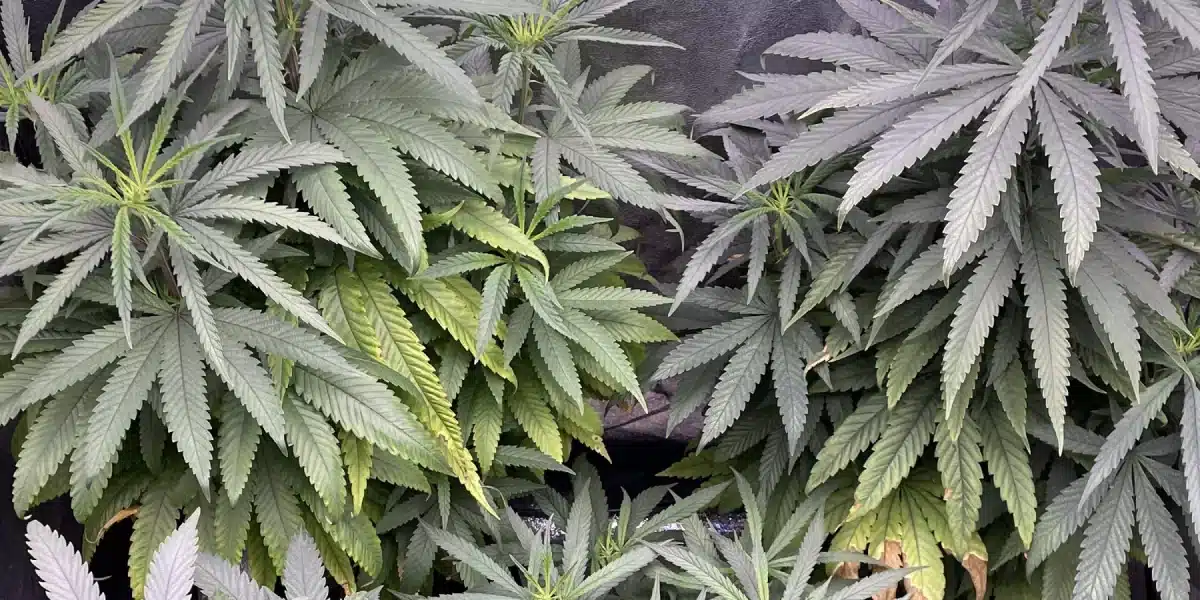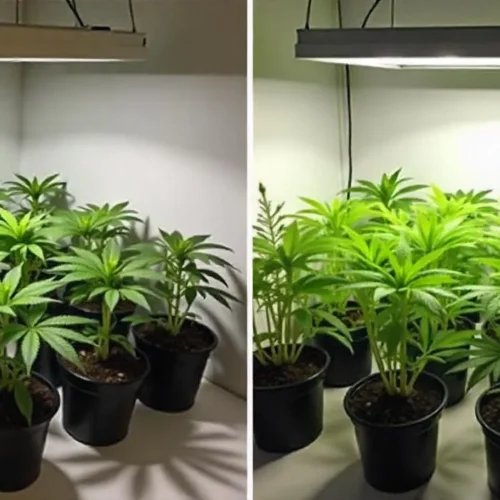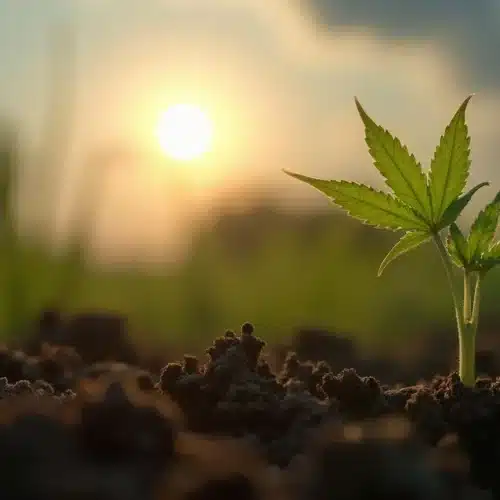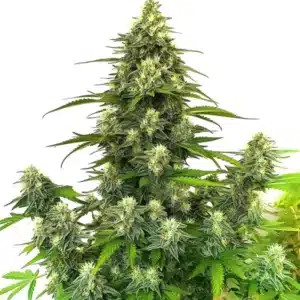Georgia Pie Seed Description
Georgia Pie is a powerful indica-leaning hybrid strain celebrated for its mouthwatering peach cobbler scent and taste. Created by crossing Gelatti with Kush Mints, this strain delivers a smooth blend of calming and mood-boosting effects, making it a favorite among both medical and recreational cannabis consumers.
The appearance of Ga Pie Strain plants is captivating, with dense, resinous buds that showcase a variety of colors, including shades of green, purple, and orange. These trichome-covered buds exude a delightful aroma that combines fruity and earthy
Recommended Strains
Georgia Pie
 THC: 20% - 25%
THC: 20% - 25% Type of seed: Feminized
Type of seed: Feminized Phenotype: Mostly Indica
Phenotype: Mostly Indica Day to flower: 8 - 10 weeks
Day to flower: 8 - 10 weeks
Gelato
 THC: 27%
THC: 27% Type of seed: Feminized
Type of seed: Feminized Phenotype: Mostly Hybrid
Phenotype: Mostly Hybrid Day to flower: 8 - 10 weeks
Day to flower: 8 - 10 weeks
Georgia Pie Strain is a highly sought-after weed pie cannabis strain known for its exceptional characteristics. It’s a hybrid notes, making it a treat for the senses.
Promos & Deals
Environmental Requirements for Growing Marijuana
Creating the ideal environment for your Georgia Pie Strain plants is essential to maximize their growth and potential. The strain’s environmental needs is crucial for a successful cultivation process.
Ga Pie Strain thrives in a temperate climate, with daytime temperatures ranging between 70-80°F (21-27°C) and slightly cooler nights. Maintaining stable temperature and humidity levels within your grow space is essential to prevent stress and potential issues like mold or mildew.
Indoor growers should invest in high-quality LED grow lights or HPS lamps to provide optimal lighting conditions. During the vegetative phase, provide 18-20 hours of light per day, transitioning to 12 hours of light and 12 hours of uninterrupted darkness during flowering.
For outdoor cultivation, select a location with ample sunlight and a favorable climate. Georgia Pie Strain thrives in a sunny and warm environment, so choose your outdoor spot carefully. If you live in a region with cooler climates, consider using a greenhouse or additional protection to extend the growing season.
Setting Up The Growing Cannabis Space for Ga Pie Strain
Before you start growing Georgia Pie Strain, it’s essential to establish an efficient and well-organized growing space. Whether you choose indoor or outdoor cultivation, consider the following factors:
Indoor Cannabis Cultivation
Indoor growers should select an appropriate grow tent or dedicated grow room that provides ample space for vertical growth. Ensure proper ventilation with an efficient exhaust system and carbon filter to control odors and maintain optimal conditions.
Choose a suitable growing medium for Ga Pie , such as high-quality soil or a hydroponic system, depending on your preference. Ensure proper drainage and maintain a pH level of around 6.0-6.5 for optimal nutrient absorption.
Outdoor Cannabis Cultivation
Outdoor growers should choose a location with abundant sunlight and suitable soil conditions. Ensure well-draining soil rich in organic matter. Consider using large containers or fabric pots when growing Georgia cannabis for better control over soil quality and root health.
Use stakes or trellises to support the branches of your Georgia Pie Strain plants, as the weight of the buds can cause bending or breaking. Protect your plants from strong winds using natural windbreaks or fencing.
Propagation and Germination of Marijuana
Successful germination and propagation are essential for healthy Georgia Pie Strain plants. Follow these steps to ensure a high germination rate and successful propagation:
1. Start with high-quality Ga Pie seeds from a reputable seed bank to ensure genetic stability.
2. Begin the germination process by soaking the seeds in distilled water or a damp paper towel for 24-48 hours. Maintain a temperature between 70-85°F (21-29°C) in a dark, undisturbed environment.
3. Once the seeds have developed taproots, carefully transfer them to a pre-moistened growing medium, such as a seedling tray or small pots with a light and well-draining soil mix.
4. Maintain a warm and humid environment with gentle airflow, keeping the temperature around 75-80°F (24-27°C) and humidity at 60-70% for optimal germination.
5. Provide indirect light to the seedlings during the first few days, gradually increasing light intensity as they develop. Avoid exposing them to intense light or heat that could cause stress or damage.
6. Once the seedlings have several sets of true leaves, they are ready to be transplanted into larger pots or final growing containers.
By following these germination and propagation steps, you can ensure a strong start for your Georgia Pie Strain plants and set the stage for healthy growth and abundant yields.
Vegetative Phase of Cannabis Seeds
The vegetative phase is a critical stage in the development of your Ga Pie Strain plants. Here are key considerations during this phase:
Lighting: Provide your Georgia Pie Strain plants with 18-20 hours of light per day to promote vigorous vegetative growth. High-quality LED grow lights or HPS lamps are recommended for sufficient light intensity and spectral distribution.
Nutrition: During the vegetative phase, Georgia Pie Strain plants require a balanced and nutrient-rich diet. Use a reputable cannabis fertilizer with a higher nitrogen (N) content to encourage healthy leaf and stem growth. Follow the manufacturer’s instructions and monitor for nutrient deficiencies or excesses.
Watering: Water your plants when the top inch of the soil feels dry. Avoid overwatering to prevent root rot and other moisture-related issues. Allow the soil to slightly dry out between watering sessions, ensuring the plants do not experience extreme drought.
Training: Consider training techniques such as low-stress training (LST) or topping to control plant height and shape. These methods create an even canopy, increase light penetration, and promote better bud development.
Pruning: Remove lower branches or leaves that receive minimal light or show signs of disease or pests. This improves airflow and reduces the risk of mold or mildew.
By providing the right environmental conditions, nutrition, and care during the vegetative phase, you can establish healthy and robust Georgia Pie Strain plants ready for the flowering stage.

Flowering Phase of Marijuana Seeds – Georgia Pie Strain
The flowering phase is the most anticipated stage in growing Georgia Pie Strain, as it’s when the plants develop their characteristic buds. Here’s what you need to know:
Lighting: Adjust the light cycle to 12 hours of light and 12 hours of uninterrupted darkness to initiate the flowering phase. Use a timer for consistency. Ga Pie Strain plants require intense light during this stage, so ensure your grow lights cover the canopy adequately.
Nutrition: Transition from a nutrient formula higher in nitrogen to a bloom or flowering-specific formula. These formulations are rich in phosphorus (P) and potassium (K), promoting bud development. Monitor the plants and adjust nutrient levels to prevent deficiencies or excesses.
Temperature and Humidity: Maintain a slightly lower temperature during flowering, ideally around 65-75°F (18-24°C), to encourage resin production and prevent heat stress. Aim for humidity levels around 40-50% to minimize the risk of mold or bud rot.
Support: As Georgia Pie Strain plants enter the flowering phase, the weight of developing buds can cause branches to bend or break. Provide adequate support with stakes or trellises to prevent damage.
Flowering Time: Ga Pie Strain typically has a flowering time of 8-10 weeks, but this can vary depending on the phenotype and environmental conditions. Monitor trichome development with a magnifying tool to determine the optimal harvest window.
Throughout the flowering phase, be vigilant for signs of pests or diseases. Implement proper pest management practices and take immediate action at the first sight of infestation or abnormalities.
Cannabis Fertilization and Nutrition
Proper nutrition and fertilization are crucial for maximizing the growth, yield, and overall health of your Georgia Pie Strain plants. Consider the following tips:
Choosing the Right Fertilizer: Select a high-quality cannabis-specific fertilizer or nutrient line with a balanced blend of macro and micronutrients. Look for products rich in nitrogen (N), phosphorus (P), and potassium (K) to support growth, root development, and bud formation.
Feeding Schedule: Follow the manufacturer’s instructions and adjust the feeding schedule based on your plants’ specific needs. Start with lower concentrations and gradually increase them as your plants progress through growth stages. Monitor for nutrient deficiencies or excesses and make adjustments as needed.
Supplements and Additives: Consider incorporating supplements and additives into your feeding regimen to enhance specific aspects of plant development. These may include bloom boosters, beneficial microbes, enzymes, or organic amendments to improve soil structure and nutrient availability.
Regularly monitor your plants’ response to the feeding program, adjusting nutrient concentrations and frequencies as necessary. Remember to flush the plants with pure water during the final weeks of flowering to remove excess salts or nutrients that can affect flavor and quality.
Pest And Disease Control for Cannabis Growing – Ga Pie Strain
While Ga Pie Strain is known for its resilience, it is still susceptible to pests and diseases. Implementing proper pest and disease control measures is crucial to protect your plants and ensure successful cultivation. Here are some preventive and corrective actions:
Prevention:
- Regularly inspect your plants for signs of pests like spider mites, aphids, or thrips. Early detection is crucial to prevent infestations.
- Maintain a clean growing space by removing dead plant material and debris that can harbor pests or pathogens.
- Introduce beneficial insects, such as ladybugs or predatory mites, to your garden to naturally control pests.
- Ensure proper airflow and ventilation to reduce the risk of mold or mildew.
- Quarantine new plants or clones before introducing them to prevent the spread of pests or diseases.
Corrective Actions:
- If you detect pests, use organic or low-toxicity pest control products specifically formulated for cannabis. Follow instructions carefully and avoid harsh chemicals that can compromise the quality of your harvest.
- For common fungal diseases like powdery mildew or botrytis, remove infected plant material, improve airflow, and consider organic fungicides or natural remedies like neem oil or a milk spray solution.
- When dealing with severe infestations or persistent diseases, consult a professional grower or horticulturist for tailored advice and solutions.
Harvesting and Curing for Cannabis Growing
Harvesting your Georgia Pie Strain at the right time and properly curing the buds are crucial steps to preserve their aroma, flavor, and potency. Follow these guidelines:
Trichome Maturity: Use a magnifying tool to examine trichomes on the buds. Harvest when they have a desired maturity, indicated by a milky or cloudy appearance with some amber trichomes. This ensures an optimal balance of cannabinoids and terpenes.
Harvesting: Use clean, sterilized pruning shears or scissors to cut branches one by one, being careful not to damage the buds. Remove large fan leaves but leave smaller sugar leaves, as they contribute to bud structure.
Drying: Hang harvested branches upside down in a dark, well-ventilated area with temperatures around 60-70°F (15-21°C) and humidity at 50-60%. Ensure proper airflow to prevent mold or mildew. Drying typically takes 7-14 days, depending on conditions.
Curing: After branches have dried, carefully remove buds from stems and place them in airtight glass jars. Store in a cool, dark place with a humidity level of around 58-62%. Burp the jars daily for the first two weeks by opening them to release excess moisture and ensure even curing. Afterward, burp the jars every few days for another 2-4 weeks, gradually reducing the frequency. Proper curing enhances the aroma, flavor, and overall quality of your Ga Pie Strain buds, so be patient during this process.
Georgia Pie Strain Indica or Sativa?
Georgia Pie Strain is a hybrid cannabis strain, meaning it has both georgia pie sativa or indica genetics. The specific indica-to-sativa ratio can vary depending on the breeder and phenotype. Hybrids like Georgia Pie Strain often offer a balanced combination of the effects associated with both indica and sativa strains.
The effects of Georgia Pie Strain can include relaxation, euphoria, creativity, and potential pain relief, making it suitable for a variety of preferences and medicinal uses. It’s essential to research the specific genetics and effects of the Georgia Pie Strain you’re growing to understand its characteristics fully.
Advantages of Growing Georgia Pie Seeds
Growing Georgia Pie seeds can offer several advantages for both recreational and medicinal users. Some of the advantages include:
- Unique Flavor and Aroma: Ga Pie Strain is known for its delightful combination of fruity and earthy notes, providing a unique sensory experience.
- Hybrid Effects: With its balanced hybrid genetics, Ga Pie Strain can offer a mix of relaxing and euphoric effects, making it versatile for various situations.
- Potential Medicinal Benefits: Some users find relief from conditions such as chronic pain, anxiety, and stress when using Georgia Pie Strain cannabis.
- Cultivation Challenges: For experienced growers, the challenge of cultivating this strain and optimizing its characteristics can be rewarding and fulfilling.
- High-Quality Buds: When grown with care and attention, Georgia Pie Strain can produce high-quality, resinous buds that are visually appealing and potent.
Disadvantages of Growing Georgia Pie Seeds
While Georgia Pie Strain offers numerous advantages, it’s essential to consider potential disadvantages as well:
- Growing Expertise Required: Georgia Pie Strain may not be the best choice for beginners, as it demands a certain level of growing expertise and attention to detail.
- Variable Effects: The effects of Georgia Pie Marijuana Strain can vary depending on factors like genetics and cultivation methods, making it challenging to predict the exact experience.
- Legal Restrictions: Ensure you comply with your local laws and regulations regarding cannabis cultivation, as it may not be legal in all areas.
- Resource Intensive: Indoor cultivation can require an initial investment in equipment and ongoing costs for electricity, nutrients, and maintenance.
- Pest and Disease Vulnerability: Like all cannabis strains, Ga Pie Strain is susceptible to pests and diseases, requiring diligent pest management practices.
Why buy Georgia Pie Strain Marijuana Seeds
If you’re interested in growing Georgia Pie Strain cannabis, buying high-quality seeds from a reputable seed bank is crucial. Here are some reasons to consider buying Georgia Pie seeds:
- Genetic Stability: Reputable seed banks offer seeds with stable genetics, ensuring you get the characteristics and effects you expect from Georgia Pie Strain.
- Seed Variety: Seed banks often provide a variety of strains, allowing you to explore different genetics and find the one that suits your preferences.
- Quality Assurance: Established seed banks typically conduct quality control measures to ensure the seeds are viable and disease-free.
- Discreet Shipping: Many seed banks offer discreet packaging and shipping options to protect your privacy and comply with legal regulations.
- Customer Support: Reputable seed banks often provide customer support and guidance to help you throughout your cultivation journey.
When purchasing Georgia Pie seeds, research and choose a trusted seed bank with positive customer reviews and a history of reliable service.
Problems in Cultivation
During your journey of cultivating Ga Pie seeds, you may encounter various challenges and problems. Some common issues include:
- Pest Infestations: Common cannabis pests like spider mites, aphids, and whiteflies can affect Georgia Pie Strain plants. Implement pest control measures promptly to prevent damage.
- Disease Outbreaks: Fungal diseases such as powdery mildew or botrytis can harm your plants. Maintain proper airflow, humidity levels, and hygiene to prevent and manage diseases.
- Nutrient Deficiencies: Incorrect nutrient levels or pH imbalances can lead to nutrient deficiencies or toxicities. Monitor your plants for signs of yellowing leaves, curling, or spotting, and adjust your nutrient regimen accordingly.
- Environmental Stress: Fluctuations in temperature, humidity, or light can stress your plants. Maintain stable environmental conditions and address stressors promptly.
- Overwatering or Underwatering: Finding the right balance of watering can be challenging. Avoid overwatering, which can lead to root rot, and underwatering, which can stress your plants.
- Harvest Timing: Harvesting too early or too late can impact the potency and flavor of your buds. Use trichome maturity as a guide for the ideal harvest time.
To overcome these problems, it’s crucial to stay vigilant, conduct regular inspections, and seek advice from experienced growers or online cannabis cultivation communities when needed. Remember that cultivating cannabis is a learning process, and each crop provides an opportunity to improve your skills and knowledge.

FAQs about Georgia Pie Strain
What is Georgia Pie Strain?
Georgia Pie Strain is a distinctive cannabis variety celebrated for its sweet, dessert-like aroma and balanced effects. Often regarded as an indica-dominant hybrid, it offers a relaxing experience paired with a flavorful profile that appeals to both recreational and medicinal users.
What are the optimal growing conditions?
This strain flourishes in environments with warm, sunny days and moderate humidity levels. Whether grown indoors or outdoors, providing consistent temperatures (around 70-80°F), quality lighting, and well-draining, nutrient-rich soil will encourage healthy growth and abundant yields.
What is the typical flowering period?
Georgia Pie Strain generally enters its flowering stage within 8 to 10 weeks, although this duration may vary slightly depending on environmental conditions and cultivation techniques. Regular monitoring of trichome development is recommended to determine the ideal harvest time for maximum potency and flavor.


















